Scenes for the Memory Vault
Mike Drew’s Tamron 24-70mm F/2.8 VC G2 and 150-600mmVC G2 help him document the landscapes and wildlife of Alberta.
Share the article:
More Photo Tips | Video Gallery | Photo Gallery | Enewsletter sign-up
By Jenn Gidman
Images by Mike Drew
Toward the western end of the Canadian prairies lies Calgary, the largest city in the province of Alberta. With abundant wildlife and vast landscapes that include mountains, forests, and desert badlands, the region has served as backdrops for such films as The Bourne Legacy and The Revenant, as well as HBO’s latest hit, The Last of Us. It’s also where editorial and outdoor photographer Mike Drew calls home, and where he wanders with his camera to tell his particular photographic stories.
“When I head out to shoot, I’m on the lookout for subjects and scenes that are visually interesting to me,” says Mike. “My photos act as a kind of memory vault for what I’ve seen and experienced.”
Included in Mike’s camera bag when he’s roaming the Princess Province: the Tamron SP 24-70mm F/2.8 Di VC USD G2 zoom and SP 150-600mm Di VC USD G2 ultra-telephoto zoom, both for his Canon mirrorless camera system. “Together, these two lenses offer me a wide range of focal lengths when I’m in storytelling mode,” he says. “The 24-70mm I obviously use for some of the wider scenes, but I tap into the 150-600mm much more, mainly due to the subject matter I gravitate toward. I often like to shoot tight, and because I take a lot of video as well, I appreciate its accurate, fast autofocus.”
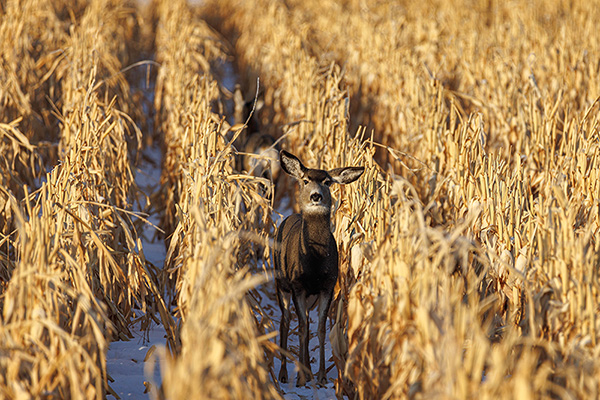
150-600mm (600mm), F/6.3, 1/1250 sec., ISO 400
Click image to view larger
The 24-70’s F/2.8 minimum aperture helps Mike shoot wide open in low-light conditions, and the Vibration Compensation feature is available to him when he needs it most. “Coming from a news background, I’ve learned over the years a variety of ways to stabilize myself,” he says. “But when I’m shooting video and trying to stay steady on a subject at 600mm, the VC helps immensely.”
Mike is also impressed with the color fidelity of both lenses. “When I saw the picture I captured of the Raven River, taken with the 24-70, I was pleased,” he says. “You can see in the background of the picture that the sun’s about to set, and the color shifts as the river moves along—it’s more blue upstream and shifts to being more green as you move downstream. The colors don’t bleed in the image, though, which you’ll often see with lenses that aren’t made as well, especially when you have such a dramatic shift in the darks and lights.”
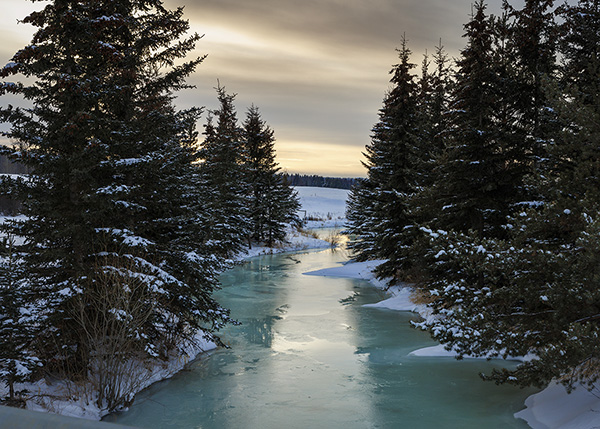
24-70mm (44mm), F/6.3, 1/640 sec., ISO 400
Click image to view larger
MIKE’S QUICK TIPS
Line up Mother Nature’s lines with man-made ones.
Sometimes you can sync the lines, curves, and shapes you see on the landscapes with the artificial ones in buildings and other human-created structures. That’s what happened here with the photo of the great horned owl, perched in the window of a granary near Mossleigh. The angles of the lines of the golden grainfield behind the granary match up almost perfectly with the lines of the building. It creates an image that’s soothing to the eye, because all of the elements work well together.
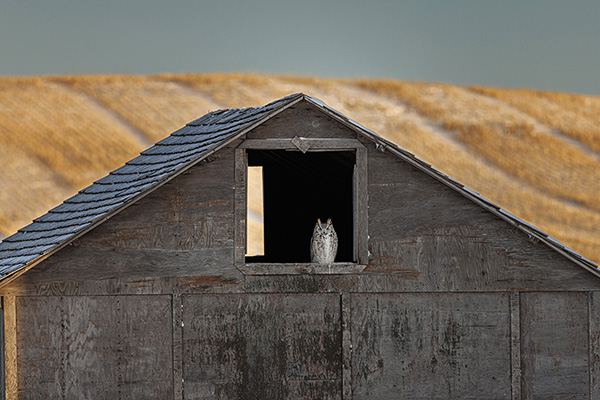
150-600mm (600mm), F/8, 1/160 sec., ISO 200
Click image to view larger
Keep an eye out for pops of color.
This applies especially in the winter, when it can be tough to find a break in the dreary whites and grays. Here in this part of Alberta we have snow fences, which are set up so they’re angled with the prevailing winds and designed to keep snow from drifting into the roads. Where I live is one of the driest sections of North America, so the fences are also used to stockpile the snow: When it melts, the moisture will seep into the ground instead of evaporating. I liked how just a bit of the fence’s treated reddish-orange wood could be seen in this image peeking out from underneath its snow cover.
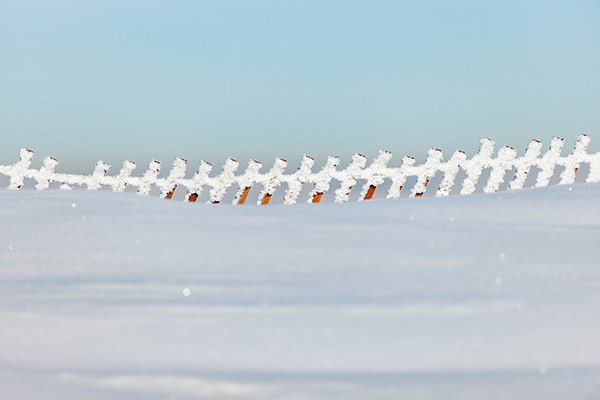
150-600mm (483mm), F/6.3, 1/4000 sec., ISO 400
Click image to view larger
Seek out creative perspectives.
I came across this cattle drive in Cochrane and the ranchers simply waved me through it. As I was inching along, I was shooting video, and when I turned around and saw the cattle coming down the road, I switched to still mode and focused on the cattle in my sideview mirror. I shot at F/6.3 so I’d have enough depth-of-field to get the cattle next to the car in focus as well.
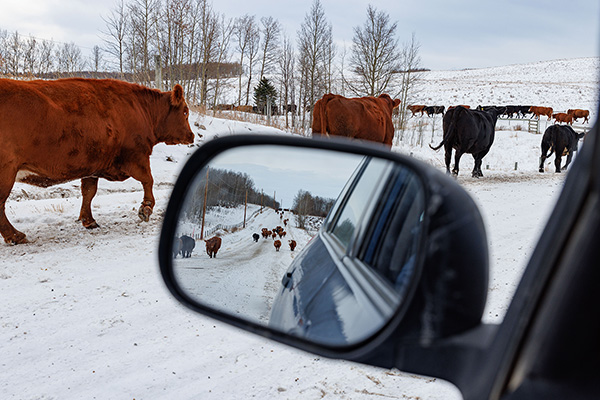
24-70mm (42mm), F/6.3, 1/640 sec., ISO 400
Click image to view larger
Images look soft? Don’t give up.
Even with the best telephoto lenses, people find it’s sometimes hard to get everything in focus. That’s because when you’re compressing all of that distance between you and your subject, you’re shooting through a lot of air—and that air has moving currents running through it, much like water. My suggestion in those cases is to turn your motor drive on and hammer through a half-dozen frames of everything you’re shooting. You’ll likely find a sharp one in that bunch.
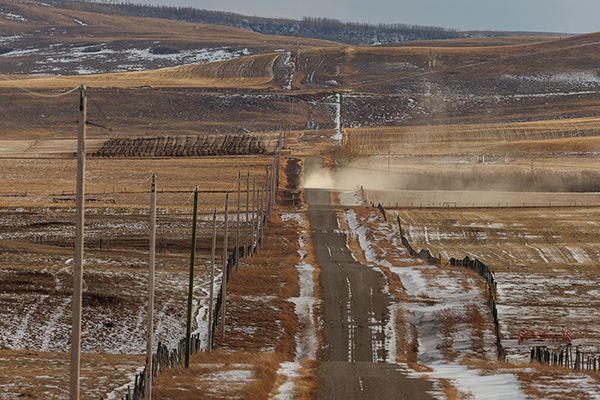
150-600mm (450mm), F/6.3, 1/1000 sec., ISO 400
Click image to view larger
To see more of Mike Drew’s work, check out his website and Instagram.
More Photo Tips | Watch Videos | Learn More About Tamron Lenses | Photo Gallery
